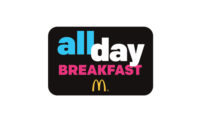Click-and-Collect Attracts Consumers
Walmart plays pivotal leading role in click-and-collect retailing

Brick-and-mortar retailers have fought back against the online tide by executing innovative strategies that play to their traditional strengths while providing consumers with an increasingly seamless omnichannel shopping experience. By allowing consumers to choose between internet-only home delivery, in-store shopping and purchasing, and online ordering with store pickup, retailers can deliver a win-win, notes market research firm Packaged Facts in the new report Walmart US Strategies and Shoppers.
“Giving customers a variety of options allows traditional brick-and-mortar merchants to leverage their store locations in new ways, drive much-needed online traffic back into the store, and give consumers a broader range of shopping and purchasing choices that make the retail experience more convenient and puts more choice in their hands,” says David Sprinkle, research director for Packaged Facts.
Survey results published in Walmart US Strategies and Shoppers underscore the growing success these relatively recent omnichannel initiatives have achieved. More than a third (35%) of online purchasers have clicked-and-collected (ordered product/service online and picked it up at a store) in the last three months, a usage statistic that Packaged Facts estimates has risen very quickly in just a few years.
Immediate need and convenience are part of click-and-collect’s allure. Clearly, click-and-collect appeals based partially on the assumption that pre-ordering saves time at the store and the flexibility inherent in choosing when to pick it up once the order has been filled.
Walmart Leads Click-and-Collect Retailers
By one measure, Walmart leads other retailers by a wide margin. Among respondent click-and-collectors, some 42% identified Walmart as the pickup location for their last click-and-collect order, three times the percentage of those who cited runner-up Target. The data suggest that Walmart’s store pickup strategy has moved out in front of the competition.
Results also suggest that, while Amazon may rule internet sales and home delivery, Amazon lockers do not register on the same scale as click-and collect programs managed by some of the largest brick-and-mortar retailers. Results therefore provide positive news for brick-and-mortar retailers seeking to grow online purchase share while leveraging their physical locations. This good news may be fleeting, however. While Amazon has not yet integrated its Whole Foods operations deeply into its overall operations, this will likely change, giving it more omnichannel firepower.
The Click-and-Collect Connection to In-Store Purchasing
Packaged Facts concludes that click-and-collect may boost overall sales at the purchaser’s retailer of choice. Some 34% of click-and-collectors purchased an additional item the last time they picked up an online order, while another 16% shopped at the store but did not buy anything extra.
For brick-and-mortar retailers seeking to straddle online and in-store purchasing, this finding is more than just a silver lining. It suggests that physical retail locations play a significant, direct role in the omnichannel purchasing experience and that they can also help build loyalty from the omnichannel purchaser, who may choose that retailer again knowing that additional needs can be met in the moment.
Walmart Click-and-Collectors
The tendency for click-and-collectors to purchase additional items when they pick up their orders is evidently more pronounced for those purchasing from high-SKU, high-variety retailers such as Walmart or Target, since the purchaser can choose from a much wider array of options in real time. Walmart Pickup Towers provide the incentive to do just that.
“Placed inside the store, the pickup towers force online purchasers into the store, where purchasers cannot help but be exposed to a plethora of Walmart’s goods and services, all within arm’s reach,” comments Sprinkle.
Walmart is rolling out the towers at a quick pace, with 700 locations to have them by January 2019, up from 100 in January 2018. The strategy is clearly intended to increase the likelihood that they will purchase additional items once in the store—and survey results suggest it is working. Some 50% of Walmart click-and-collectors shopped at the store for additional items and bought more items, versus 31% of Target click-and-collectors, and 34% of click-and-collectors generally.
About the Report
Owing to its size and scale, Walmart’s actions have far-reaching consequences for virtually every major retail category. Walmart US Strategies and Shoppers gives industry participants needed insight into the nation’s largest retailer’s strengths, weaknesses, and related initiatives (inclusive of Walmart US and Sam’s Club) from four contextual angles:
· the broader retail market,
· the financial products and services market,
· the groceries and consumables market,
· and the pet products and supplies market.
From each angle, the report focuses on omnichannel (online, in-store, and aggregated) consumer purchasing trends over time and includes analysis of pertinent strategies (such as click-and-collect, the click-and-collect connection to in-store purchasing, dynamic pricing, and subscription services). Topic-specific Walmart metrics are compared against its competitors
Looking for a reprint of this article?
From high-res PDFs to custom plaques, order your copy today!





